042616_YKMV_A8.pdf





April 26, 2016 • Page 8
shop online at www.missourivalleyshopper.com
Johne’s Disease: Managing
Exposure to Manure
BROOKINGS, S.D. - Paying
attention to manure exposure is a crucial component in controlling Johne’s
Disease in cow-calf herds, explained Russ Daly, Professor,
SDSU Extension Veterinarian,
State Public Health Veterinarian.
“It’s the manure that
serves as the source of bacteria for uninfected cattle,”
Daly said. “Since Johne’s
Disease primarily affects the
intestine, an infected animal
sheds the bacteria (Mycobacterium avium subsp.
paratuberculosis) through
their manure.
While often considered
a condition of dairy cows,
Johne’s Disease has increasingly been identified as a
concern for beef producers,
Daly explained.
Animals affected by this
disease show signs of diarrhea and progressive weight
loss, often in the midst of
a normal appetite. “These
animals are culled from the
herd before they become
debilitated, but worse yet,
they serve as the source of
disease to others within the
herd,” Daly said.
He explained that typically, it’s a young calf that is
the most likely to become
infected with the bacteria.
“However, Johne’s Disease
is such a slowly progressing
condition that signs don’t
show up until the animal is
much older: often 3-4 years
of age or more,” he said.
Knowing this, Daly
said the key to decreasing
Johne’s Disease transmission comes down to preventing young stock from coming
in contact with manure
from potentially infected
animals. “Preventing young
stock from having excessive
contact with manure from
the cow herd can seem to be
a daunting task, but a critical
one if Johne’s Disease is to
be controlled within a herd,”
Daly said.
Keep Calving Areas Clean
While preventing all
contact with manure is not
feasible in a cow-calf operation, there are some actions
that producers can take to
reduce this contact.
“Infectious disease
transmission often comes
down to a numbers game:
the fewer bacteria in a calf’s
environment, the lower the
likelihood of disease,” Daly
said. “Anything we can do
to reduce these numbers
stacks the deck in favor of
health over disease.”
The calving area is
especially important when
it comes to transmission of
Johne’s Disease.
“Newborn calves are
particularly vulnerable to
When you ?nance farmland with us, you
aren’t just another customer – you are a
customer-owner. So along with our attractive
rates and exceptional terms, you get a voice
in how we work and a share of what we earn
in the form of cash-back dividends. Call us to
learn more.
YANKTON OFFICE:
605-665-9675 OR
800-658-3631
BROOKINGS, S.D. - New
bulls need to be managed
carefully between delivery
and the start of breeding season to maximize the return
on the investment in new
genetics.
“New herd sires represent
a sizeable investment to a
cow/calf business,” said Warren Rusche, SDSU Extension
Cow/Calf Field Specialist.
Rusche explained that
one of the major components of the cost of natural
service, is the number of
years of useful life of the
herd sires.
“Greater lifespan allows
the initial purchase price
to be spread out over more
calves,” he said.
Considering the value
of most yearling bulls at
production sales this spring,
spending some additional
attention to help make sure
that the transition phase
proceeds smoothly would
seem to be effort well spent.
79 ACRES OF SPRING VALLEY TOWNSHIP TURNER COUNTY
,
LAND AND 78.59 ACRES TURKEY VALLEY TOWNSHIP YANKTON
,
COUNTY LAND OFFERED IN 4-TRACTS AT AUCTION
Our family has decided to offer the following land for sale at public auction located at 45022 291st St. Viborg, SD
or from the 4-way stop in Viborg go 5 ½ miles west both sides of the road or from Center Point, 2-miles east on both
sides of the road on:
WEDNESDAY MAY 11TH
10:30 A.M.
AUCTION HELD ON SITE
It is our privilege to offer the following land located in these two tightly held townships located on the Turner & Yankton
County line. This land auction offers powerful, high quality tillable land, improved acreage site with outstanding trees,
waterfowl production/recreational land and will be offered in several combinations to accommodate any size buyer.
Land is rented for the 2016 crop year.
TRACT ONE: 78.59 ACRES
LEGAL: The N ½ of the NW ¼ Section 2, 96-54 Yankton County, SD.
• 71.29 acres tillable with 4.62 acres of hayland, 1.47 acres in trees, balance found in RROW.
• Soil production rating of 72.8. Predominant soils Egan-Ethan Trent rating (82) & Egan-Wentworth (91)
• Rented for 2016 crop year for $14,276.00 or $182/acre. First half of the rent will be paid to the buyer at closing
and 2nd half paid 10-1-16.
• Base & Yield and wetland maps, and other pertinent info found in the buyers packet
• Annual taxes are $844.21. Currently enrolled in ARCH County with the FSA office.
TRACT TWO: 27-ACRES + OR – IMPROVED
LEGAL: Bartels Tract 1 an addition in the S ½ of the SW ¼ of Section 35, 97-54 Turner County, SD. Subject to survey
to verify acres and approve legal description. Known as 45022 291st St. Viborg, SD.
• This tract includes the improved acreage site that is 6.44 acres in size along with 19.93 acres in waterfowl
production/recreational land. An opportunity to purchase a piece of South Dakota Hunting Heaven. Lots of
potential, endless possibilities.
• Home consists of a modern, clean, move in ready 928 sq ft 2+ bedroom home that has been steadily maintained.
Several outbuildings included along with great park-like setting yard, and awesome trees.
• This tract will be offered as a lump sum and not by the acre. New buyer to receive immediate possession upon
closing of this entire tract.
• If your looking for a new home site on a hard surfaced highway, or possible hunting lodge contact the auctioneers to
set-up a private showing.
TRACT THREE: 52-ACRES + OR –
LEGAL: Bartels Tract 2 an addition in the S ½ of the SW ¼ of Section 35, 97-54 Turner County, SD. Subject to survey
to verify acres and approve legal description.
• 48.35 acres tillable balance found in RROW. This would include all land to the north and west of the building site
and the 13.55 acres east of the water.
• Soil production rating of 72.4. Predominant soils include Egan-Ethan Complex (77) and Ethan-Egan Complex (61).
• New buyer to receive the 2016 rent if sold separate.
TRACT FOUR: 79-ACRES COMBINATION OF TRACTS 2 & 3
LEGAL: The S ½ of the SW ¼ less the East 2-rods of the SE ¼ of the SW ¼ Section 35, 97-54 Turner County, SD.
• If sold as one unit, no surveys will be completed and buyer will settle on the taxable acres.
• Soil production rating of 65.8. Predominant soils Egan-Ethan and Ethan Egan soils.
• New buyer to receive the 2016 rent in the amount of $9,717.00 or $123/acre.
TO INSPECT THE PROPERTY: We invite you to inspect the property at your convenience or you may visit www.
wiemanauction for a buyers packet and pictures or contact the auctioneers at 800-251-3111 and a packet can be
mailed out. Contact auctioneers to schedule a showing of the home and outbuildings.
TERMS: Cash sale on all tracts with 15% (non-refundable) down payment auction day with the balance on or before
June 23rd, 2016. Warranty deed to be granted with the cost of title insurance split 50-50 between buyer and seller.
Sellers to pay all 2015 taxes. New buyer will be responsible for all of the 2016 taxes. If sold in smaller tracts, sellers
at their expense will have the property surveyed. First half rent check will be reimbursed to the buyer at closing and
2nd half payment will be made on 10-1-16. Property will be sold in whatever manner realizes the most for the seller.
Sold subject to owner’s approval and all easements and restrictions of record. Land auction held on site. Come
prepared to buy!!
HEIRS OF HILRAY & MARLENE BARTELS –OWNER
Wieman Land & Auction Co. Inc.
Marion, SD 800-251-3111
Gary & Rich Wieman Brokers
that contribute to manure
contamination of water
sources (stock dams and
creeks rather than water
tanks); conditions that contribute to manure contamination of feed (feeding on
ground rather than in bunks
or feeders); cows sick from
other illnesses running with
cow-calf pairs on pasture;
and use of equipment (skid
steers, loaders, etc.) contaminated with manure from
the cow herd.
As cattle get older, Daly
explained that their resistance to new infection with
Johne’s Disease bacteria
increases. “However, even
weaned calves can become
infected, particularly if exposure levels are high,” he said.
Because of the typical
long incubation period
of Johne’s Disease, newly
weaned animals destined to
become replacement females
or bulls are the group of animals of most importance.
Conditions that increase
the risk of these animals to
become exposed to Johne’s
Disease bacteria include:
close proximity to or running
with the cow herd, particularly if animals affected by
Johne’s Disease are present;
conditions that contribute
to manure contamination
of water sources (stock
dams and creeks rather than
water tanks); conditions
that contribute to manure
contamination of feed (feeding on ground rather than in
bunks or feeders); manure
from the cow herd spread
on pastures or forages used
that same season; and use of
equipment (skid steers, loaders, etc.) contaminated with
manure from the cow herd.
niGrow
Managing New Herd Sires
fcsamerica.com
THERE’S A REASON
REAL ESTATE BUYERS
LAND WITH US.
the bacteria entering their
bodies, where they begin the
slow steady progression to
clinical disease that may appear years later,” Daly said.
Risky conditions for
calving areas include: use by
multiple cows at the same
time (rather than individual
pens); manure buildup; dirty
conditions that contribute to
soiled udders; and cows with
clinical Johne’s Disease or
other illnesses nearby or in
the calving area.
As young calves are
paired up with their mothers
and leave the calving area,
exposure to manure remains
a threat for the transmission
of Johne’s Disease.
Conditions for nursing
beef calves that contribute
to Johne’s Disease exposure
include: cows with clinical
Johne’s Disease running with
cow-calf pairs on pasture;
manure buildup; conditions
Gary Ward
Closing Attorney
605-326-5282
Dietary Adjustments
In most cases, Rusche
explained that yearling bulls
have been developed on
higher energy diets than
what will be available to
them during the breeding
season. Therefore, he said
simply turning young bulls
out to the breeding pastures
increases the likelihood of
excessive weight loss and
potentially a reduction in
fertility and libido.
“Extreme weight loss
could also impact longevity,”
he said. “Adapting bulls to
lower energy diets prevents
bulls from “crashing” and
increases the odds of success.”
Changes in diets should
be made gradually.
“Sperm cells mature over
a 60-day period, so avoid any
drastic changes during the
two months before the start
of breeding season,” Rusche
said.
The concentrate portion of the ration should
be gradually reduced in
a series of steps until the
desired level is reached. “It’s
important to remember that
these bulls are still growing
and to not restrict nutrient
intake too much,” he said.
“They should be gaining 1.5
to 2 pounds per day and be
in a body condition score of
about a 6 at the start of the
breeding season.”
As with any class of livestock, Rusche said the necessary mineral and vitamin
supplementation as well as
a high quality water source
should be provided.
Physical & Social Considerations
Beyond the nutritional
and dietary considerations
of bull development, there
are other factors that need
to be considered as well.
“Breeding bulls will have a
high level of physical activity, especially early in the
breeding season, seeking out
and breeding cows in heat,”
Rusche said.
Much like an early season
“training camp,” allowing for
increased opportunities for
exercise will help improve
the bulls’ physical condition
and stamina levels, which
should help insure their
ability to remain functional
throughout the breeding
season. “Additional exercise
on pasture also serves to
reduce the potential for feet
and leg problems,” he said.
Many producers will
utilize more than one bull
in a breeding pasture. If the
bulls have not run together
previously, they will very
likely spend time fighting to
establish a “pecking order”
rather than getting cows
bred.
Rusche suggested grouping the bulls according to
their assigned breeding
pasture groups prior to the
start of the breeding season
allows those “social adjustments” to take place before
breeding season starts.
Breeding Soundness
Exam
A breeding soundness
exam (BSE) should be
conducted by a veterinarian
approximately 30 to 60 days
before the start of the breeding season.
A BSE would include a
physical examination of
the bull, with particular
emphasis on the reproductive organs, along with an
evaluation of the semen and
sperm cells.
niGrow
Skidloader – Tele-Handler
Collectible Vehicles & Tractors
Trailers – Antiques & More
Saturday, April 30th, 11:00 a.m.
Located: 47418 301st Street, Alcester, SD; From Alcester/Wakonda Exit #42
off I-29: 3 1/2-miles East, 1 mile North, 1/4-mile East or from the Alcester REA
Building 4 ½-miles West.
Skidloader – Tele-Handler – Loader: 2004 NH LS180 diesel Skidloader,
cab, 6ft bucket, pallet forks, bale spear, 3100hrs; 2001 Gradall 534D-42 turbo
6 tele-handler, auxiliary front outlets, 42ft reach, Cummins diesel, 4100 hrs, 8ft
bucket, forks, foam filled tires, 24ft scaffold; JD 148 loader w/ grapple, JD mnts;
Collectible Tractors: JD 70 restored, nf, good rubber, SN#7018557; JD 3pt
hitch for 70 – sold separate; JD A, partially restored, nf, S#651870;
Collectible Pickup – Vehicles – Trailers: 1969 Ford F-250 Ranger, 390,
AT, factory air, gas and propane, new paint, nice truck; 2008 Lincoln MKZ; 1985
Ford Ranger 2.8, AT, 91K; 1999 Pontiac Gran Prix, 4dr; 1997 Chevy 1/2T 4x4,
AT, new tires, bad trans; 2004 Wilson 24ft gooseneck alum. livestock trailer, 2
gates, new tires; Road Boss 25ft 5th wheel flatbed w/ beaver tail;
Livestock Equipment: 2T bulk bin; approx 10pcs of 20ft continuous fence;
2 horse round bale feeders; mineral feeder; creep feeder; lick tank; misc corral panels & gates; Sioux horse stall; 5 turbo cattle fans; steel & alum fitting
chutes; fitting mat; 2 show boxes; clippers; combs; misc show accessories;
water tanks; nurse tank; sev fencers;
Construction Tools: Approx 15 concrete stamps; sev nail guns; 10 sets of
scaffolding; 2 port air compressors; Rolair wheel barrow compressor; sockets;
sheet rock jack; Hitachi miter saw; power trowel; DeWalt saws all; Craftsman
table saw; DeWalt cut off saw; transit; Stihl chain saw; concrete stakes; battery
chargers; come a longs; 2 floor jacks; Lincoln 225 arc welder; misc hand tools;
tool boxes; ext cords; shop vac; stepladders; concrete tools; misc siding & tin;
18V Milwaukee tools; Wenn 5500 port generator; MC tile saw; MM propane
heater; bakers scaffold; Reese 5th wheel hitch; 100gal port pickup fuel tank;
plywood; misc steel trim;
4 Wheeler – Lawn & Garden: 2009 Artic Cat 500 4-wheeler; Cub Cadet
LT1045 hydro mower; Stihl straight shaft weed eater;
Antiques – Primitives – Household: Frigidaire SXS refrigerator/freezer;
couch w/ matching chair & ottoman; couch, dresser, curio cabinet; galvanized
tubs; enamel table; enamelware; cabinets; iron bed; sev old chairs; doors; shoe
repair; wicker furniture; misc furniture; stools; wringer; crocks; sev bikes; many
items too numerous to mention
Dean & Cynthia Farley – Owners
605-214-1503
Terms: Cash, Good Check, Visa, MasterCard. SD Sales tax applies. Not responsible for accidents.
GIRARD AUCTION
& LAND BROKERS, INC.
(605) 267-2421
Toll Free: 1-866-531-6186
www.GirardAuction.com








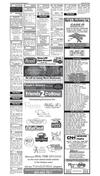
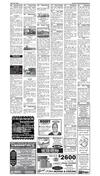
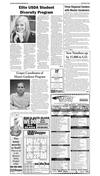


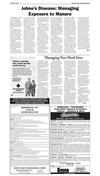

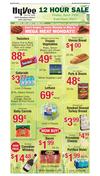
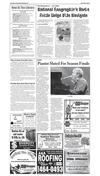
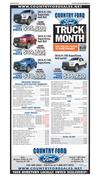

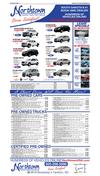
 Previous Page
Previous Page





